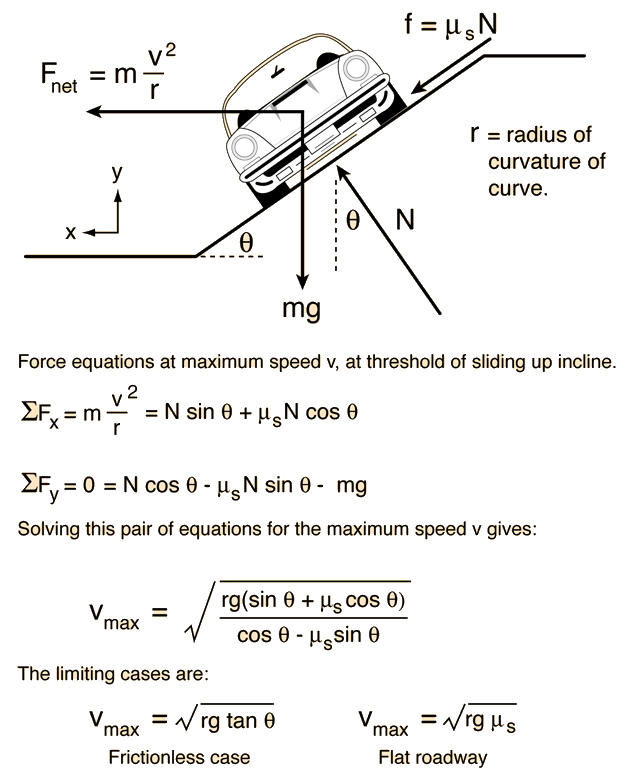Maximum Speed on Banked Roadway

The concepts used in this analysis included Newton's second law, centripetal acceleration, static friction, and the division of vectors into components. The horizontal components of the friction and normal force are constrained to provide the centripetal acceleration in the x direction to keep the car moving in a circle. The sum of the y components of all the forces must be zero since there is no acceleration in that direction.
Friction concepts
| HyperPhysics***** Mechanics | R Nave |